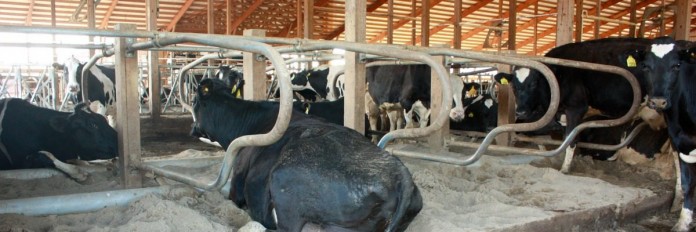It looks like we might have a spring after all. As we all wait anxiously for our fields to dry off enough to allow field work, sowing and planting, we are left to ponder about what direction the swirling dairy winds will be taking for the balance of the year.
As I have often written in this column, predicting milk prices beyond a three-month horizon is risky at best.
However, we can look at the current status of the major factors influencing dairy prices to get an idea of where prices are heading assuming no unforeseen events.
What traders are saying
One can always look at the futures Class III prices to get an indication of where people trading contracts think milk prices will settle for the balance of the year. As of this writing, Class III futures are averaging $15.39/cwt for March, April, and May, and $16.29/cwt for the balance of the year.
These translate to mailbox prices in the $16 to $17/cwt for Ohio producers. Not great, in fact below the average total cost of producing milk in Ohio, but above the average cash cost of production.
Both the Class III and IV futures have dropped in the last 3-4 weeks following an upsurge from the mid-January lows. This upsurge was the result of factors occurring completely outside our borders.
New Zealand drought
In late 2014, Fonterra (the dominant milk company in New Zealand) announced that milk production in New Zealand would be dropping considerably due to a drought over most of the country.
Although there were some areas experiencing below-normal rainfall, some postulated that the apparent drought was nowhere as severe as what was being inferred. But world buyers became worried of possible lower production from the world largest exporter.
Prices of products traded on the Global Dairy Trade (a global electronic auction system operated by Fonterra) began to rise, leading U.S. domestic buyers to presume that higher dairy prices were forthcoming.
Well, whether the drought was real or not, cyclone Pam has brought plenty of rain to New Zealand. Combined with the European Union soon abandoning its quota system (April 1), and the incoming spring flush in the United States, buyers now think there should be plenty of milk around in the coming months.
Plus, the Chinese have stopped buying. Economic hiccup in China. We are not talking of an economic disaster in China, but clearly its rate of economic growth has noticeably slowed down.
Bought too much
Also, there is a general consensus that China misread the world milk supply last year and bought way too much dairy products, thinking that product availability would become even tighter later on.
Apparently, not even 1.3 billion people could consume that much stuff, so the flow of dairy imports from China has slowed down considerably. To make things worse, the world once again likes our dollar.
The good old greenback is once again in demand. As you likely have read, economic growth in Europe has come to a near halt. Governments and central banks are intervening using some of the same fiscal tools as those that were used in the United States just a few years ago, lowering interest rates and, well, printing money (quantitative easing).
Russian economy
Meanwhile, Russia’s economy has been sickened by the economic sanctions resulting from its involvement in the Ukrainian conflict, and oil exporting countries have seen their revenues from oil exports cut in half from where they were last summer.
All of a sudden the U.S. economy doesn’t look so bad anymore.
Because most people anticipate the Feds to raise interest rates, many world investors suddenly have a keen interest for the potential yield and the security of the greenback.
Consequently, the U.S. dollar has appreciated over the past year by 13 percent vs. the New Zealand dollar; by 15 percent vs. the Australian dollar; and nearly 25 percent vs. the Euro.
This is good if you are planning a vacation overseas, but not so good if you are trying to export dairy products and you are competing with these countries for foreign markets.
Rays of sunshine
Of course, milk prices are only one part of the profit equation. Cow productivity and the costs to produce milk are arguably as important.
We have had a miserable winter from a human standpoint in the central and eastern U.S., but our cows have generally done well during these cold days. We are also finding out that the 2014 corn silage crop was on an average much better than what we had in 2013.
The quality of our feeds looks quite good. On the crops side, the South American corn and soybean crops are reportedly huge. In North America, although a few areas of the United States are dryer than normal, the subsoil moisture reserves range for the most part from good to excellent.
Unless an unpredictable event occurs, the domestic and international stockpiles of grains and oilseeds should become even larger, resulting in moderate to potentially low feed costs for the foreseeable future.
Of course, things can change in a hurry, but as things stand for now, what we have in terms of price and dairy profitability should remain pretty much the same for the balance of the year.












